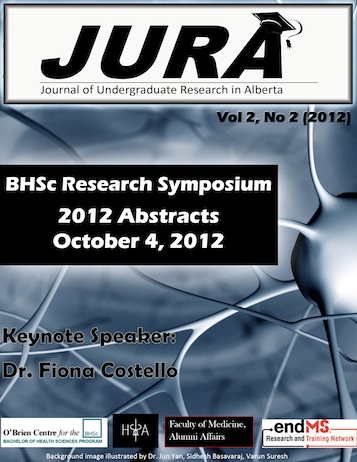A comparison of the frequency of physical disorders in patients with and without associated Conduct Disorder
Abstract
Conduct disorder (CD) is a psychological disorder that is characterized by sustained symptoms of antisocial behaviors. The objective of this study was to identify the relationship between associated physical disorders in CD patients, and physical disorders in patients not diagnosed with any psychiatric disorder (PD). This was done through a population based analysis of health records spanning 16 years of 16,474 unique individuals with CD in the Calgary Health Zone catchment area.
Results showed that back problems and various non-allopathic lesions of the body were evidenced at fivefold and twofold the frequency in patients with CD compared to the no-PD group. Furthermore, cardiovascular problems were observed at double the rate in patients with CD as opposed to patients with no PD.
A proposed mechanism that explains the higher correlation between CD and the top physical disorders associated with it can be speculated from a physiological standpoint. Research has shown that CD patients display abnormally disrupted activity in the brain cortex. This abnormality results in upregulated production of corticotropin releasing factors (CRF). As per normal activity of the hypothalamic-pituitary-adrenal axis, CRFs ultimately result in the production of corticosteroids such as cortisol. Cortisol functions by elevating blood glucose (BG) levels so it can be speculated that an increased and sustained level of energy is available to CD patients. Although more evidence needs to be gathered to validate a concrete biological mechanism, increased BG has been associated with increased blood pressure, explaining the higher rate of cardiovascular problems.
The data indicate that CD patients have a higher risk of certain somatic diagnosis than the comparison no-PD group. This finding has significant implications for the administration of healthcare policy.
Downloads
References
Sanfey, A. G. (2007). Social decision-making: Insights from game theory and neuroscience. Science, 318, 598-602
Majzoub, J. A. (2006). Corticotropin-releasing hormone physiology. European Journal of Endocrinology, 155, 71-76.
Downloads
Published
Issue
Section
License
Authors retain all rights to their research work. Articles may be submitted to and accepted in other journals subsequent to publishing in JURA. Our only condition is that articles cannot be used in another undergraduate journal. Authors must be aware, however, that professional journals may refuse articles submitted or accepted elsewhere—JURA included.


